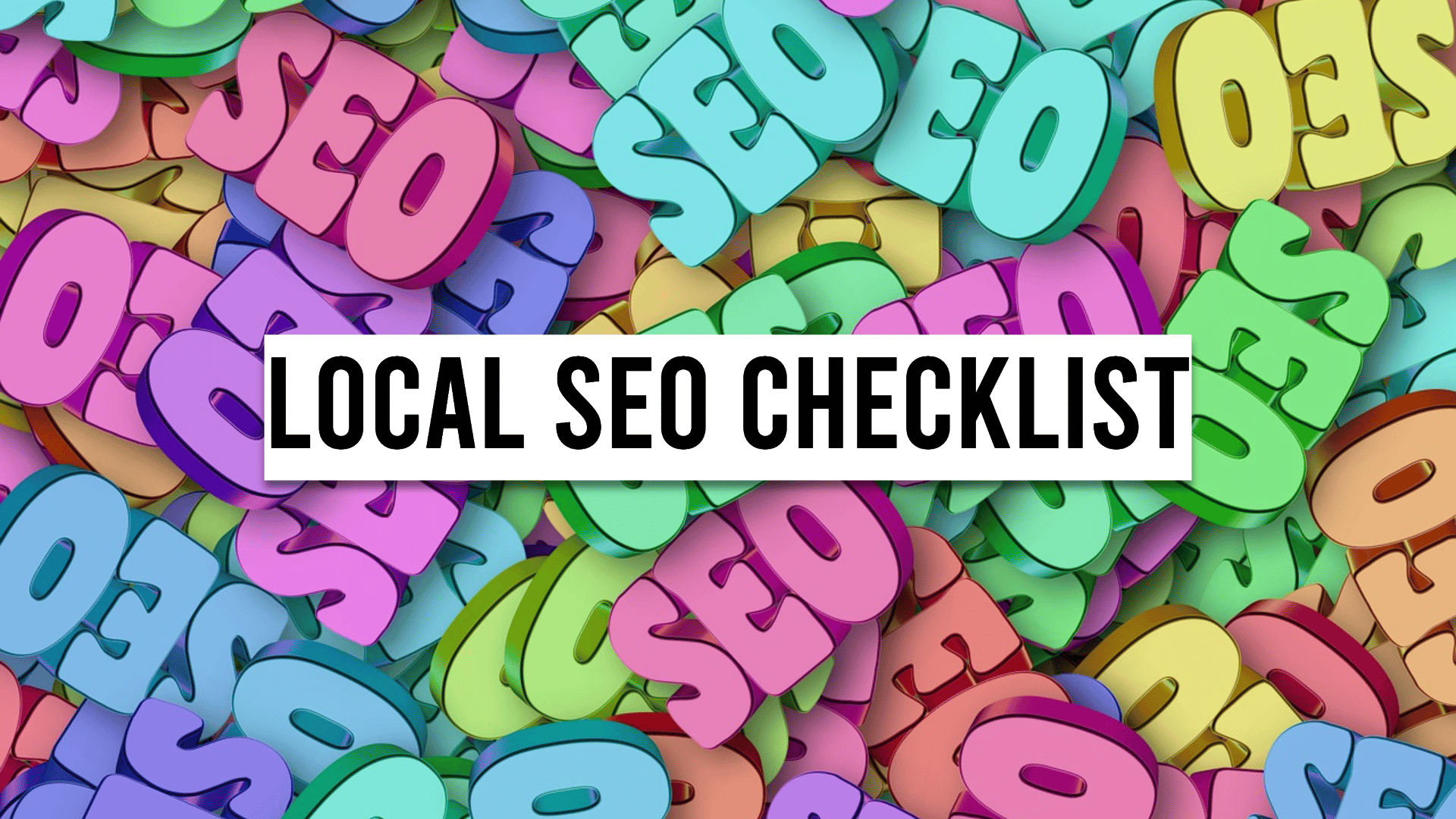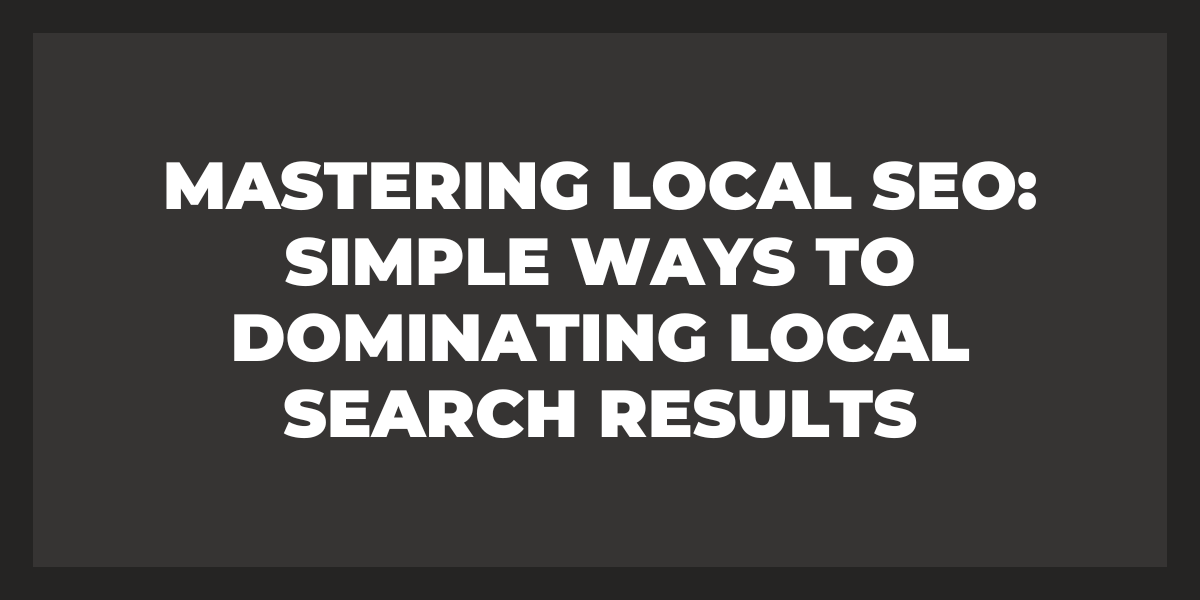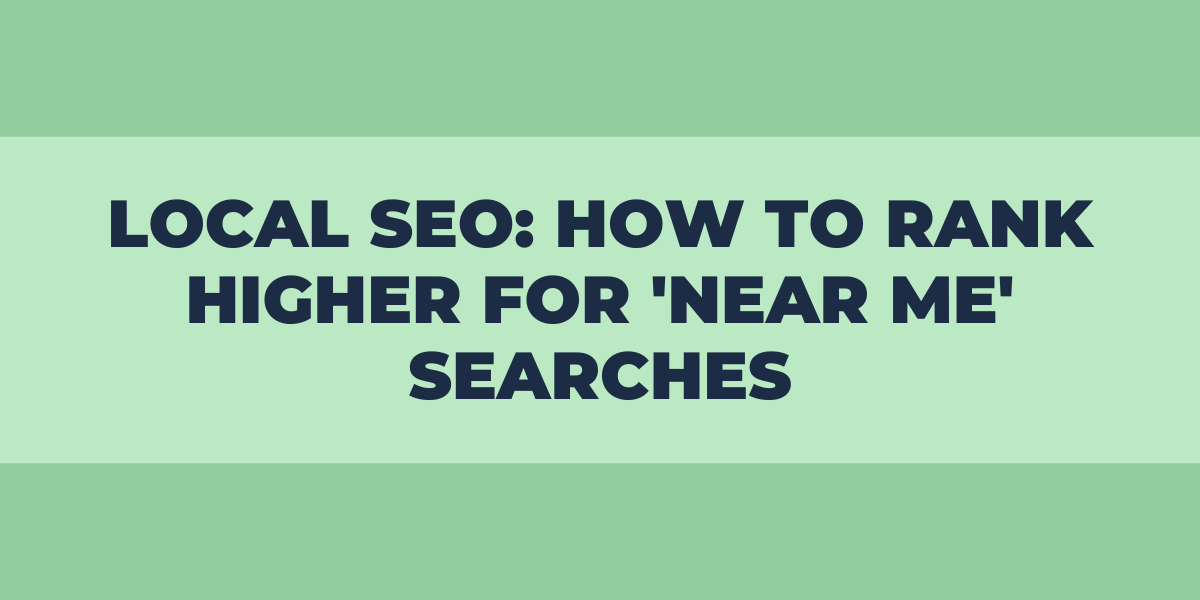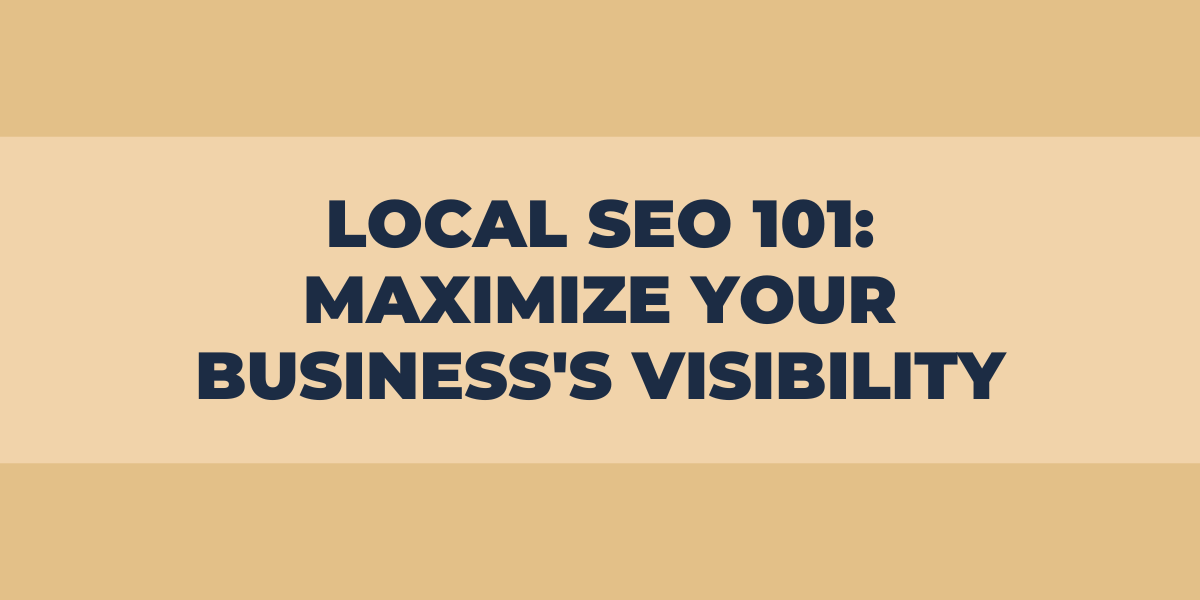As a business owner, ensuring that your website is optimized for local search is essential. Without the right local SEO strategies in place, potential customers may not be able to find you when they need your products or services.
Fortunately, there are several steps you can take to improve your local SEO and make sure that people in your area can easily find you online. A comprehensive local SEO checklist will help you stay organized and on task as you work towards optimizing for maximum visibility within search engine results pages (SERPs).
With the right approach and some dedication, you can set yourself up for long-term success with a strong presence on SERPs across multiple platforms.
Technical Local SEO Checklist
Technical local SEO is an essential part of any business’s online presence. It involves optimizing on-site and off-site elements to help local customers find you. Here’s a comprehensive technical local SEO checklist that covers the basics:
Set Up Your Website for Localization
Ensure it is set up for localization so it can be appropriately indexed in different countries and regions. This includes using language tags, integrating with local payment systems, having customer service or support staff who speak the local language, and customizing content to meet regional needs.
Optimize Page Titles and Meta Descriptions
Your page titles should include relevant keywords that describe what the particular page is about. Meta descriptions should also be keyword-rich and have a call to action when possible. Localized versions of these elements are also essential in helping users find you in their area.
Create Localized Content
Content tailored to a specific region or locale can help increase organic search traffic from those areas. Try to create helpful content on topics related to your business’s products or services while being mindful of language barriers in specific markets.
Make Sure Your NAP Information is Correct
NAP stands for name, address, and phone number — all of which must be accurate across all platforms where potential customers might find you. Incorrect NAP information will lead people away from your local business instead of toward it!
Claim Your Google My Business Listing
Setting up a Google My Business (GMB) listing allows users to quickly get more information about your business — including directions, hours of operation, and contact details — right within the search engine results page (SERP). To claim this listing, visit https://www.google.com/business/ and follow the instructions there; once claimed, you can update essential information like location, hours, services offered, and more directly within GMB.
Add Structured Data Markup
Structured data markup helps search engine crawlers better understand what each page on your website is about by connecting related items into one cohesive whole. Adding this type of markup provides additional context for local SEO ranking factors without manually creating new web pages with duplicate content.
Integrate Social Media Profiles
Social media profiles are great places for customers to reach out directly with questions about products or services offered by businesses. They also serve as valuable places for business owners to showcase what makes them unique amongst competitors in their local marketplaces.
Leverage Local Reviews
Reviews provided by customers on sites like Yelp and TripAdvisor not only influence consumers’ purchasing decisions, but they can impact how well those businesses rank locally in SERPs as well due to their authority within those specialized industries. Work hard at earning 5-star reviews whenever possible (while keeping within ethical guidelines) – it pays off!
Build Citations from Other Websites
Also known as link building, citation building involves creating authoritative links from other websites that demonstrate trustworthiness within one’s own industry space – such as trade associations or industrial directories.
On-page Local SEO Checklist
On-page local SEO is integral to any local business’s online presence. As such, ensuring that your website follows all the best practices for reaching potential customers in your area is essential. To provide you get maximum visibility, here is a checklist to help you with on-page local SEO:
Incorporate Local Keywords
Ensure your website includes keywords related to your city, state, or region so that search engines can identify where your business operates and serve relevant results.
Optimize Business Listings
Take the time to fill out all of the details associated with claiming a listing on each central directory like Google My Business, Yelp, or Foursquare – these include business name and address (NAP), phone number, opening hours, etc., as they form a critical aspect of ranking well locally.
Create A Geo-targeted XML Sitemap
Include location-specific pages within an XML sitemap – this will allow crawlers to locate them quickly and signal relevance based on location data provided when indexing content from webpages found within it.
Location pages
Location pages are designed to communicate essential details about a business’s physical locations, such as an address, hours of operation, contact information, etc., in an organized manner that is easy for Google bots to parse and index.
Structured Data Markup
Structured data markup provides additional information about the content on web pages, making it easier for search engine bots to understand what the page is about. This helps search engines find and index your website more quickly and accurately, which can lead to higher rankings in organic searches.
Page URLs
The structure of a page URL is broken into several components. The folder structure follows the domain name, then individual pages and sections of a URL can be separated by forward slashes (/). It’s essential to keep these portions as neat and organized as possible for improved user experience and SEO.
Mobile Responsiveness
The critical elements of any mobile-friendly page include appropriate text size for readability, pages that load quickly and responsively across all devices, straightforward navigation that allows users to easily find their way around the website, minimal scrolling and swiping, images that are optimized for smaller devices, and more.
Site Speed
It affects the overall user experience and can directly impact how well a website performs in search rankings. A few key checkpoints to consider when it comes to site speed include the following:
- Optimizing Images: Ensure all images are optimized for web use, saving them at a lower quality with smaller file sizes, so they load faster.
- Minifying Code: Removing unnecessary white space, comments, and other code optimizers such as HTMLMinifier and CSSNano can help reduce file size, improving loading times.
- Leveraging Browser Caching: Browsers store certain assets such as images, stylesheets, and JavaScript files so that they don’t have to be downloaded each time someone visits a page on the website.
- Optimizing Server Response Time: The time it takes for a server to respond can affect how quickly a web page loads. Especially when dealing with large amounts of data or complex user requests such as search queries or product filtering options in an e-commerce store.
- Reducing Redirects: Redirects are necessary in some cases. Still, too many of them can significantly slow down page speeds as each request adds additional latency, which translates into slower load times for web users trying to access content on your site or application.
Off-page Local SEO Checklist
Evaluate Competition
The first step in creating a practical off-page Local SEO Checklist should be researching your competition. You’ll need to evaluate how well their websites are optimized for local search results and what strategies they’re using to get more visibility in local searches.
This will give you an idea of what needs to be done to ensure your business stands out from the competition.
Build Good Backlinks
The next step would be developing a quality link-building campaign for local optimization. Link building is a vital part of any successful off-page Local SEO campaign as it can help establish your website as a credible source and increase its authority with search engines like Google.
Focus on submitting content to high-quality websites and directories and engaging in link exchanges with other businesses in your geographic area to improve visibility for both parties involved.
Publish Guest Blogs
It’s also important to consider other forms of online promotion, such as article submissions, blogging, directory submission services, reviews, and social media promotion when creating your off-page Local SEO Checklist.
Use the Right Meta Details
Ensure all content associated with promoting your company has been optimized for local searches by including appropriate metadata, tags, keywords, and descriptions that relate directly to your business goals within the local community.
Conduct Keyword Research
Another critical component of a successful off-page Local SEO Checklist is organic keyword research for each targeted page or section within the website so that visitors can find exactly what they’re looking for quickly and easily via search engine results pages (SERPs).
Find Relevant Keywords
Identify keywords related to services or products offered by the business which may have higher relevance in localized areas, such as city names or zip codes. This will help boost visibility even further within those specific regions while giving you a better chance at ranking higher within SERP listings.
Monitor Progress
Finally, remember ongoing monitoring of progress towards achieving desired goals; use analytics tools like Google Analytics or Bing Webmaster Tools regularly so that adjustments can be made if needed and long-term performance can be tracked accurately over time.
Google My Business Checklist
GMB allows business owners to create a free profile on Google, which can be found when someone searches for the type of business in their area. It’s like having your virtual storefront, but with the added benefits of providing customers with essential details such as hours of operation, contact information, photos, and reviews.
Creating a GMB account requires a few simple steps:
- First off, you need to sign up at google.com/business by entering your business name and location.
- Then confirm that it’s yours by verifying ownership using either postcard or phone call verification.
- Finally, customize the listing with relevant info about your business including address, phone number, and website URL.
Optimize GMB Listing
To keep your GMB listing optimized, it should be regularly updated with new content, such as images or blog posts related to your industry. You should also monitor customer feedback so that you can respond quickly to any complaints or issues.
This will help maintain customer loyalty and increase visibility on search engine result pages (SERPs). Finally, don’t forget to add additional locations if needed!
How to Use Local SEO for Optimizing Your Website
Local SEO is an effective way to optimize your website for local customers and businesses. With the proper techniques, you can ensure that your business shows up in local search results when people search for products or services like yours in their area.
Get Infront of Customers
Optimizing your website with local SEO allows you to reach more potential customers and increase your visibility online.
Publish Localized Content
Local SEO starts with creating content relevant to your business’s geographic area. This includes adding location-specific keywords throughout the page titles, meta descriptions, body text, images, and other media on your website.
Target Regional Terms
It would help if you also linked back to pages on other websites that mention geographical terms related to where you do business so that search engines know exactly what regions you serve.
Use Accurate Information
Additionally, make sure all of the contact information listed on your site (such as address and phone number) is accurate and consistent across all platforms, including Google Business Profile, social media profiles, or third-party sites such as Yelp or Google My Business listings.
How to Use Local SEO Content Strategy
By focusing on local searches with the right content, local businesses can gain more exposure and attract potential customers searching for services or products near them.
Identify the Target Audience
The first step to using a local SEO strategy is researching the target audience and understanding their needs. Businesses should explore their target audience’s demographics, interests, and behaviors to create effective strategies that cater to their specific needs.
Once this research has been done, businesses can begin creating content that will appeal to these audiences and optimize it for local search engine result pages (SERPs).
Publish Relevant Content
To ensure maximum visibility in local search engine results, businesses must create content containing relevant keywords and phrases and Location Pages. Location Pages are optimized web pages that contain information about a business’s physical location, such as an address, hours of operation, contact info, etc.
This type of page allows companies to appear higher in the SERPs for locally targeted searches because it provides additional information about the location and the keywords used in the query.
Build High-Quality Links
Beyond creating relevant content and optimizing it for local SERPs, another essential aspect of a successful regional SEO content strategy is building backlinks from other authoritative sites. Backlinks are links from third-party websites back to your website; they act as votes of confidence regarding search engine rankings.
Building relationships with influential websites in your industry is vital; when they link back to your website, you’ll be rewarded with better rankings and higher visibility among prospective customers.
Track Existing Data
Finally, companies should monitor their efforts by tracking data related to increases in website visitors or conversions from organic searches within their target market. Analyzing this data helps determine whether campaigns have been successful or not.
If not, changes can be made quickly so that new strategies can be implemented swiftly without losing out on potential customers within the area being targeted.
How to Use Local SEO Citations Strategy
Citations refer to mentions of your business name, address, and phone number (NAP) on other websites that are considered trusted and relevant sources. These citations help search engines like Google determine the relevance and accuracy of your business’s information to the user’s local search query.
Create Local SEO Citations
Creating and managing local SEO citations can be tedious since they must be tracked down on numerous websites. However, it is worth the effort as they can significantly impact how high your website ranks in local search engine results pages (SERPs). Moreover, many users rely on local citations finder when considering whether or not to visit a business.
Find Business Listing
To use a successful local SEO citation strategy, start by researching which websites offer high-quality listings for businesses in your city or state. Some popular directories include Google My Business, Bing Places for Business, Yelp, Apple Maps, Google Maps, Angie’s List, Foursquare City Guide, TripAdvisor, and more.
Build NAP Information
Next, create consistent NAP information for each listing so all of them contain the same data about your business — this will ensure accuracy across sites and improve optimization for local searches.
Use High-Quality Keywords
You must also use keywords strategically when filling out the listing information and choose categories that accurately reflect your type of business. For example, if you own a restaurant in Chicago, avoid using generic terms such as “food” or “eatery” but instead opt for more specific phrases such as “Italian restaurant” or “Pizza joint in Chicago.”
Check All Details
Finally, once all the listings have been created, it is best practice to check that all information remains accurate across the board regularly. This should be done at least every few months to ensure no outdated information has been posted about your business online by one of the directories.
Content Mistakes to Avoid
- One of the biggest mistakes people make when creating content for SEO is not focusing on quality over quantity. Having lots of pages with keywords sprinkled throughout helps improve your rankings temporarily.
- Another mistake to avoid is keyword stuffing – flooding articles with too many keywords in a bid to get noticed by Google algorithms but ultimately making them unreadable and irrelevant from a human perspective.
Frequently Asked Questions
How to do local SEO step by step?
Step 1: Keyword Research & Strategy.
Step 2: Optimize Your Website.
Step 3: Create Local Content & Citations.
Step 4: Claim & Optimize Local Profiles.
Step 5: Utilize Local Link Building Strategies.
Step 6: Monitor & Analyze Results.
What is a local SEO audit?
A local SEO audit is a detailed assessment of a website’s search engine optimization (SEO) to determine its position in organic search results for local searches. This type of audit helps identify potential improvements that need to be made to maximize the website’s visibility and rank in local search engine results.
What is the difference between SEO and local SEO?
The main difference between SEO and local SEO is that local SEO focuses on optimizing for a specific geographic location. This includes optimizing for searches made with city or region names, tracking and improving a business’s online visibility in local search results, implementing techniques to target potential customers in the area better, and more.
How do I focus on SEO?
To focus on SEO, you must ensure your website is properly optimized for search engines. This involves optimizing your content with the right local keywords, having a well-structured website and site architecture, building internal links, creating quality backlinks by engaging in link-building activities, and regularly monitoring your SEO performance.
Wrapping Up
With some effort put into optimizing locally, you should experience greater success with both organic search engine rankings and increased customer engagement through social channels. Good luck!














